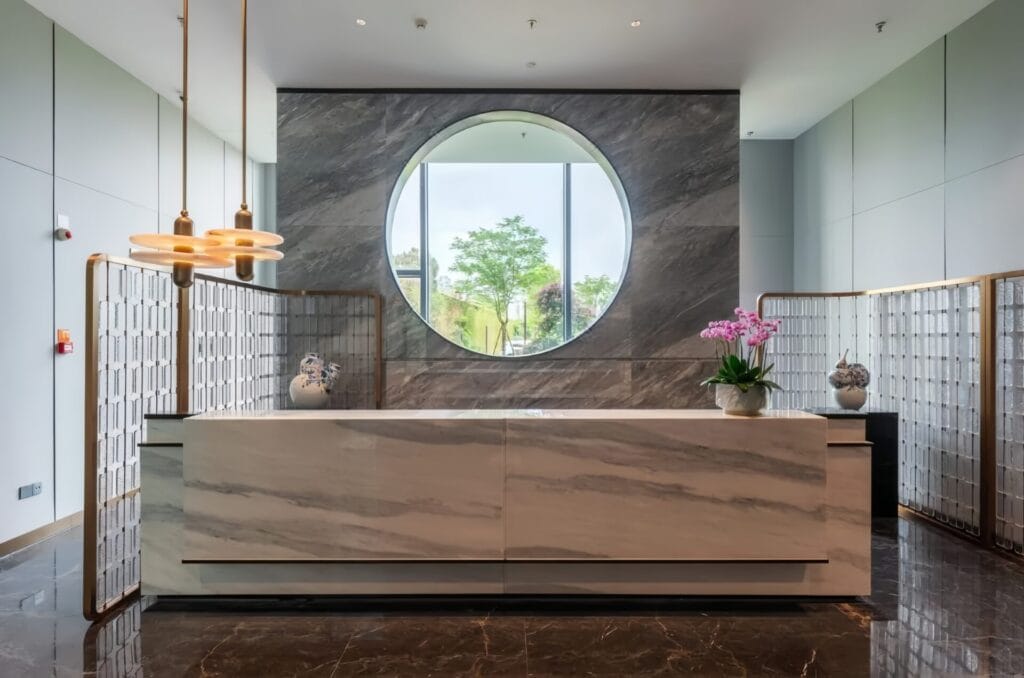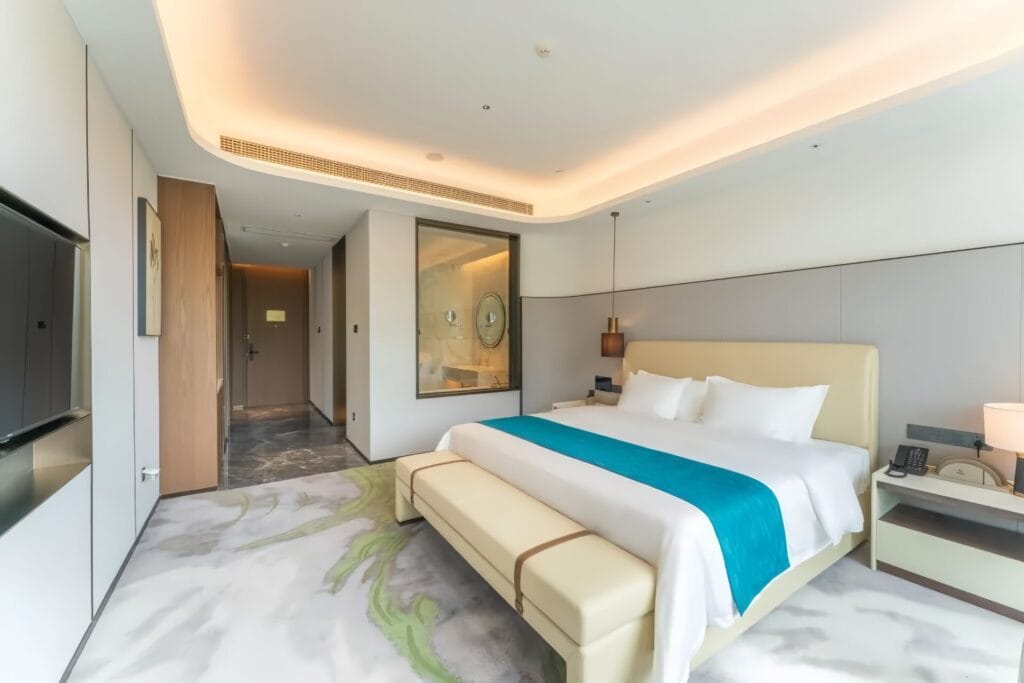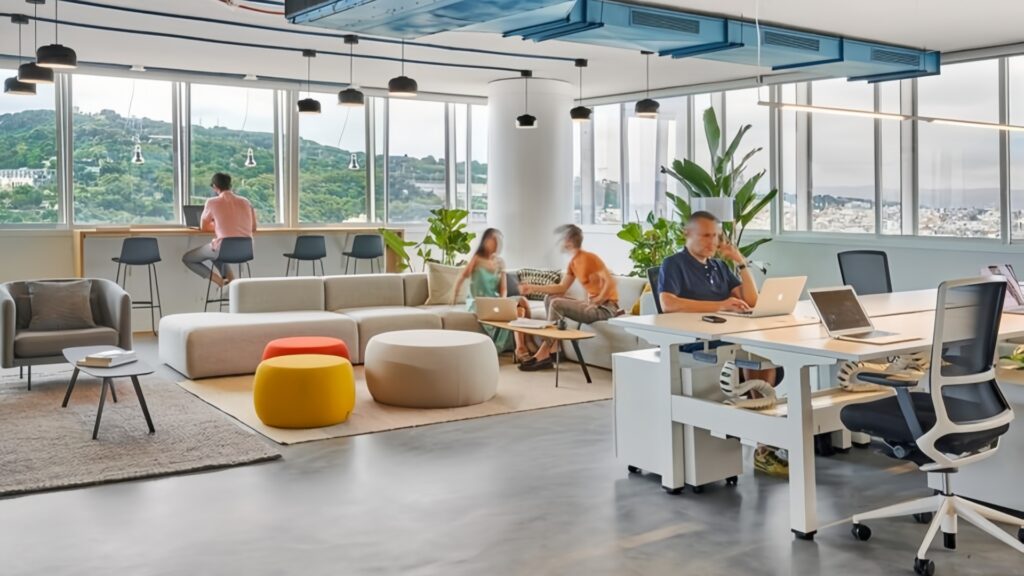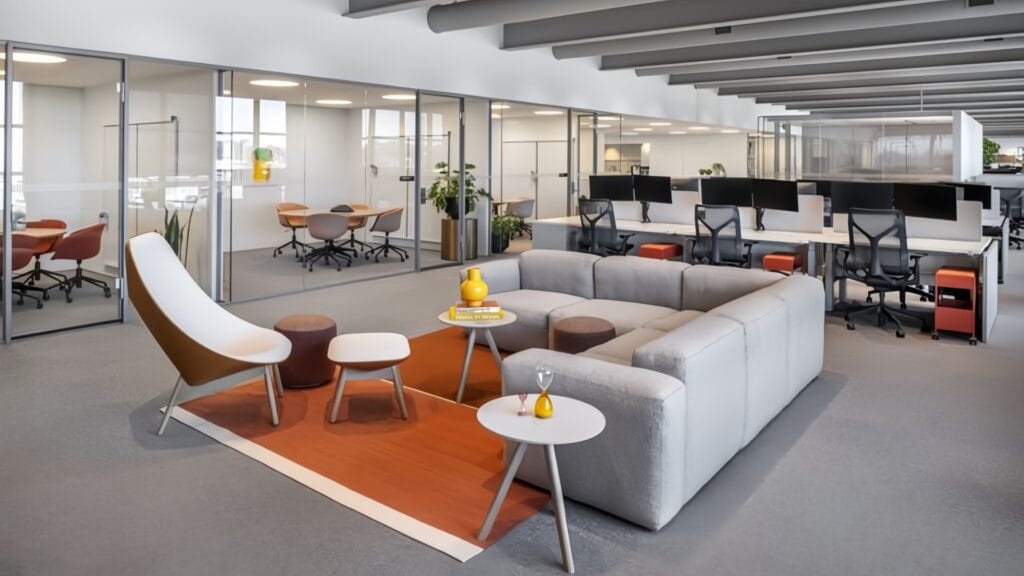Introduction: The Importance of Proper Furnishing

Furnishing an office or hotel is a task that goes far beyond mere decoration. It’s about creating a functional, comfortable, and inspiring environment. Every piece of furniture impacts how the space is used and experienced—by employees, guests, or clients. Whether you’re designing an office or a hotel, making the right furniture choices can boost productivity, improve guest satisfaction, and reflect your brand’s identity.
For offices, the right furniture enhances employee comfort and fosters collaboration. Ergonomically designed desks and chairs can improve posture and reduce fatigue, while workstations and meeting areas encourage communication and teamwork. Similarly, in the hospitality industry, carefully selected furniture plays a key role in shaping a guest’s experience. From the lobby to the guest rooms, the furniture contributes to the hotel’s ambiance, branding, and overall guest satisfaction.
This guide is designed to help you make informed decisions, ensuring your space is optimized for both function and style. Let’s walk through each step of the process, from assessing your space to ensuring sustainability, so that you can create a welcoming and efficient environment.
Assessing Your Space and Defining Your Needs
The first step in furnishing any office or hotel is a careful assessment of the space. Measure the dimensions of each area, paying close attention to the layout, windows, doors, and other architectural features that might influence the placement of furniture.
Next, consider the purpose of the space and the specific needs that arise from that function. For offices, evaluate the number of employees who will occupy the area, as this directly impacts your commercial furniture guide. Determine the required functional areas such as workstations, meeting rooms, and communal spaces to foster collaboration. A well-planned office furniture checklist will ensure that essential elements—like desks, chairs, and storage solutions—are included to enhance productivity and comfort.
For hotels, it’s important to consider the guest capacity and the intended atmosphere of each area. Different spaces—like reception, guest rooms, and common areas—will require specific types of furniture that are both durable and aesthetically pleasing. A hotel furniture checklist helps to ensure no detail is overlooked, ensuring that the furnishings enhance both the function and ambiance of the space.
Remember to consult with all stakeholders involved, gathering input from employees or hotel staff, to understand their needs and preferences. A collaborative approach will help you achieve a well-balanced design that suits everyone.
Step 2: Establish a Realistic Budget
A clear and realistic budget is essential when furnishing an office or hotel. Start by making a comprehensive list of all the furniture and accessories you’ll need. For an office, this might include desks, chairs, filing cabinets, and conference tables. In a hotel, you’ll need everything from beds and lounge furniture to dining tables and outdoor seating.
Once you have a list, break down the costs into fixed and variable expenses. Fixed costs include the initial purchase of furniture, while variable costs might include ongoing maintenance or unexpected repairs. Allocating funds carefully will help you avoid overspending while still getting quality pieces that meet your needs.
Include a contingency allowance of 10-15% of your total budget to cover unexpected costs. This gives you flexibility, especially when you encounter last-minute opportunities for upgrades or need to replace items.
Lastly, prioritize your purchases. Focus on high-impact pieces first—like ergonomic office chairs or comfortable hotel bedding. These items will significantly affect the space’s functionality and appeal. A clear budget will help you stay on track while ensuring you get the best value for your investment.
Step 3: Choose the Right Furniture for Functionality
Selecting the right furniture is crucial to creating a space that is both functional and comfortable. For offices, ergonomic chairs and adjustable desks are a must-have. These pieces promote employee well-being by reducing discomfort and supporting healthy posture. Don’t forget to include meeting tables that encourage collaboration, allowing team members to work together effectively.
In a hotel, the lobby is the first impression guests will have, so it’s important to select stylish yet functional furniture that welcomes them. Comfortable couches, stylish coffee tables, and inviting armchairs are key pieces. For reception areas, opt for modular desks that allow front-desk staff to assist guests efficiently while maintaining a polished, professional look.
By focusing on functionality, you’ll create a space that enhances both employee productivity and guest satisfaction. Whether it’s the ergonomic office chair or the cozy hotel armchair, the right furniture will support the primary functions of the space.
Step 4: Focus on Aesthetics and Brand Identity
Furniture should reflect the brand’s image and contribute to the overall aesthetic of the space. Whether you’re furnishing an office or a hotel, design plays a huge role in creating a cohesive, professional environment.
For offices, the color scheme, materials, and style of furniture should align with the company’s brand. Bright colors like orange or blue can energize the workplace, while softer shades like green or gray promote calmness and focus. Integrating the company’s brand colors into furniture choices, whether it’s through the upholstery of chairs or the finish on tables, strengthens the visual connection between the space and the brand.
In hotels, aesthetics are just as important. The furniture should complement the hotel’s theme and overall atmosphere. A luxury hotel might favor high-end materials like leather or polished wood, while a tech startup office might embrace minimalist designs with sleek metal and glass finishes. Keep in mind that the materials you choose should not only look good but also be durable and easy to maintain.

By considering both functionality and brand identity, your space will tell a story that resonates with employees, guests, and clients alike.
Step 5: Incorporate Technology and Accessories
Today’s office and hotel environments rely heavily on technology, so it’s important to incorporate tech-friendly furniture. Charging stations, multimedia setups, and integrated smart displays can improve both the functionality and aesthetic of a space. For offices, ensure charging stations are strategically placed to give employees easy access to power without disrupting their workspaces.
For hotels, consider incorporating bedside charging ports, easy-to-use entertainment systems, and high-speed Wi-Fi access points. Small additions like these can greatly enhance guest satisfaction and comfort.
Accessories such as shelves, decorative art, and plants also play a role in creating a welcoming environment. Shelving units not only help maintain an organized space, but also provide opportunities to display decorative elements that personalize the room. Consider adding plants or artwork that reflect your brand’s values, bringing a natural and relaxing vibe to both office and hotel spaces.
Step 6: Plan for Sustainability
In today’s world, incorporating sustainability into the furnishing process is not only a trend but a necessity. Businesses looking to furnish their offices or hotels must consider eco-friendly materials and furniture sourcing as a key component of their strategy. Employing sustainable practices can yield numerous benefits, including reduced environmental impact, enhanced brand reputation, and long-term cost savings. A well-thought-out commercial furniture guide can help organizations identify sustainable materials such as reclaimed wood, recycled metals, and low-VOC (volatile organic compounds) finishes, all of which contribute to a greener environment.
When navigating an office furniture checklist, prioritize options that are certified by credible organizations, indicating a commitment to sustainability. These certifications often indicate that the materials used have met specific environmental standards and are designed to minimize harm while maximizing utility. For a hotel furniture checklist, focus on sourcing furniture from manufacturers dedicated to environmental stewardship, ensuring that the furnishings not only meet aesthetic and functional requirements but also reflect a commitment to sustainability.

Promoting a culture of sustainability within your office or hotel space starts with education and engagement. By fostering awareness among employees and guests about the importance of eco-friendly practices, businesses can cultivate an environment that values sustainability. Encourage practices such as recycling, the use of energy-efficient appliances, and mindful consumption to reinforce this culture. Moreover, consider integrating biophilic design—incorporating natural elements such as plants and natural light, which can enhance well-being while contributing to a sustainable approach in furnishing a hotel or office.
To summarize, developing a sustainable plan for furnishing your workspace is essential. By selecting eco-friendly materials, supporting certified manufacturers, and encouraging sustainability within the culture, businesses can create an environment that aligns with contemporary values of responsibility and environmental consciousness.
Step 7: Ensure Comfort and Versatility
When it comes to furnishing a new office or hotel, ensuring comfort and versatility is pivotal for creating environments that promote productivity and relaxation. The choice of seating options plays a crucial role in this process. Ergonomic chairs in an office setting are essential for supporting long hours of work, while lounge chairs in a hotel lobby can enhance guest comfort. The key is to choose a variety of seating styles that cater to different needs, thereby facilitating both collaborative work and individual tasks.
Moreover, multipurpose spaces are becoming increasingly popular in both office and hotel environments. By utilizing flexible furniture arrangements, these areas can transform to accommodate a range of activities—from casual meetings and brainstorming sessions in offices to social gatherings and relaxation zones in hotels. Furniture that can easily be reconfigured, such as modular seating systems or collapsible tables, can significantly elevate the functionality of these spaces, allowing for swift adaptations based on requirements.
In addition, the versatility of furniture should not be underestimated. Adjustable desks that accommodate both sitting and standing positions can enhance employee comfort and productivity in an office setting, while furniture that can be easily rearranged for different occasions maximizes the potential of hotel spaces. Investing in pieces that encourage flexibility not only serves an immediate purpose but also aids in future-proofing spaces against evolving trends in work and leisure.
Furnishing an office or hotel necessitates careful consideration of comfort and versatility to meet diverse needs. By integrating ergonomic seating options, creating multipurpose areas, and emphasizing flexible furniture solutions, establishments can cultivate environments that enhance both work and relaxation. In conclusion, a well-planned commercial furniture guide that prioritizes comfort and adaptability can significantly improve the user experience, ensuring that both employees and guests feel valued and cared for.
Step 8: Consider Logistics and Installation
Logistics and installation are vital components of the furnishing process. Proper planning will ensure a smooth transition as you bring your new space to life. Start by understanding delivery timelines and coordinating with your suppliers. Make sure you’re clear on when each item will arrive and what’s needed for installation.
Scheduling assembly ahead of time is also crucial. Many pieces may require professional assembly to meet safety and aesthetic standards. Be sure to allocate sufficient time for assembly to avoid disrupting hotel operations or office work.
Space layout also plays a significant role in the logistical equation. Before furniture delivery, conducting a comprehensive space layout evaluation is paramount. This will aid in visualizing how the pieces fit within the intended areas, thus avoiding any confusion on installation day. To capitalize on the available space, create a detailed plan that incorporates the dimensions of your furniture alongside appropriately defined pathways. Implementing a well-thought-out layout, supported by your hotel furniture checklist or office furniture checklist, ensures not only aesthetic appeal but also maximizes functionality.
Finally, map out the layout of your space before furniture arrives. This will help you visualize how everything fits together and streamline the installation process. Consider traffic flow and how furniture will be arranged to maximize both aesthetics and functionality.

Conclusion: Finalizing Your Furnishing Choices
As you approach the final stages of furnishing your office or hotel, it is essential to take a step back and reflect on the various elements discussed in this comprehensive commercial furniture guide. The process of how to furnish an office or hotel requires a delicate balance between aesthetics, functionality, and budgetary constraints. Each decision made throughout this journey plays a crucial role in creating an environment that not only aligns with your brand identity but also enhances the overall experience.
First, remember the importance of adhering to an office furniture checklist or a hotel furniture checklist, as these tools serve as invaluable resources. They help ensure that no detail is overlooked, from essential pieces like desks, chairs, and conference tables in the office, to beds, seating areas, and dining furniture in hotels. Each item should contribute to a cohesive design while meeting practical needs, ensuring that every corner of the space is optimized for productivity or relaxation.
Reflecting on your choices is equally vital. Consider how your selected furnishings will impact employee productivity and guest satisfaction. A well-furnished environment not only conveys professionalism but also fosters an atmosphere conducive to efficiency and comfort. As you finalize your decisions, envision how each piece will work together to create an inviting and functional space, tailored to the needs of your occupants.
In conclusion, the process of furnishing a hotel or an office is more than just selecting furniture; it is about crafting an experience. By carefully considering form, function, and budget, and using checklists to guide your decisions, you can create a harmonious space that leaves a lasting impression on both employees and guests alike.
